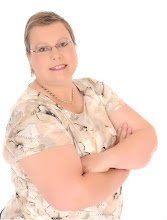Today at A Cup of Coffee and a Good Book, we have the opportunity to speak with author Josi Kilpack. I will be reviewing her book
Devil's Food Cake tomorrow, March 17th, so come back to check it out!
Josi Kilpack Interview
Jennifer Walker: What inspired the story of Devil's Food Cake?
Josi Kilpack: I already had Sadie and Garrison developed through the first two books in the series. My publisher had asked that this one be chocolate based and I had involved Sadie’s daughter in one of the previous books so I wanted to introduce her son. I also needed a different kind of murder to solve, I’d done two that happened off stage—which is typical of a cozy—so I wanted something a little different. Those were my starting ‘kernels’ of the story. The other details built around those things until I had a story in mind that I hoped would work. My 13 year old helped me come up with the first chapter, maybe that should worry me :-)
Jennifer Walker: Are any of the characters, situations or events based in reality?
Josi Kilpack: Sadie is a combination of women I’ve known in my life, slightly exaggerated. Many of the other characters begin similar to a real life person too, but inevitably by the end of the book they have changed into someone very different—which is a good thing :-) As for the events of the story, I glean information I happen to know about here and there, but most of it just evolves with the story.
Jennifer Walker: Are mysteries your favorite type of book to read, as well as to write?
Josi Kilpack: When it comes to reading, it’s actually suspense that gets most of my attention. I love Sue Graphton, John Grisham, and Mary Higgins Clark—plot driven novels with well written characters. That said, I read a little bit in a lot of genres and, for me, it all comes down to the story. I can ignore poor grammar (I’m not that good at it myself) and little plot issues here and there if the story can keep the dishes in the sink and the laundry in a pile on the floor. My family can tell when I’ve found a great book by what we’re having for dinner and how many chores are left undone at the end of the day. If it’s a good book, the house is a mess and it’s hot dogs for dinner again.
Jennifer Walker: Tell us about the recipes in Devil's Food Cake. Where did they come from, and have you prepared them all?
Josi Kilpack: Yes, I’ve made all the recipes in the book. More importantly, a group of 7 other cooks make up Sadie’s Test Kitchen which is a private blog where I post recipes I’m considering for the books. These cooks make them, tweak them, help me clarify instructions, and give feedback on their family’s reaction. They are absolutely priceless to the process of getting things just right. The actual Devil’s Food Cake recipe is my mom’s, the one I grew up on. I tried a few other recipes when looking for the perfect one for the book, and none of them could top Mom’s. In addition to making the recipes I suggest, the Test Kitchen also volunteers recipes as well. In Devil’s Food Cake, the Sandra’s Chocolicious Frosting, Angel Snowball Cake, and Evil Chicken Dinner by Laree are all recipes from my Test Kitchen Bakers. Did I mention they’re priceless?
Jennifer Walker: How did you become an author, and how did your publishing journey begin?
Josi Kilpack:Up until I wrote my first book I had never thought about becoming a writer, let alone an author. I’d never had a teacher tell me I was talented, I’d never really written for anything outside of what I needed to do. I’d gotten good grades in English through high school (which made up for the Ds in math) and taken just one year of college; during which I took all the writing classes I could. After that I got married and started a family and never thought about writing until, while on bedrest with a pregnancy, I started writing a short story because I had run out of other things to do and the idleness was making me neurotic. That story grew and grew and ignited something within me that I didn’t know was there. Even when I had this 300 page story I didn’t think about publishing—publishing was just SO big. I mean, to be a novelist? I was a mom, I was a homemaker. How could someone like me publish a book? However, I’d had a great time writing that book and after the encouragement from friends I jumped into it and a year and a half later I had my first published book. For me, writing was a bend in the road I didn’t see coming, but boy has it become a journey since then.
Jennifer Walker: Tell us about your family. Are they supportive of your writing?
Josi Kilpack: I’ve been married to my high school sweetheart for nearly seventeen years, and we have four kids ages 16, 14, 11, & 8. They are incredibly supportive of my writing and I couldn’t make it work without them. They not only help me find the time to write, but they share their enthusiasm about my accomplishments and brag about my writing to people they meet. However, they also keep me firmly planted in reality. My husband helps keep me my priorities straight. I know many writers from many different family situations and consider myself very blessed to have the support of my family the way I do.
Jennifer Walker: Do you have a "day job", or do you support yourself through writing? If the former,how do you balance everything?
Josi Kilpack: My husband and I are self-employed and I keep the books for our window covering business. We didn’t expect I would need to be involved, however the economy has required both of us to adjust our expectations. Balance, in my mind, is an illusion. Sometimes work demands my attention more than my writing, other times I can push things aside and make some significant progress on my current novel. I try very hard to keep my family at the top of my list, but they make sacrifices too. I’m constantly looking ahead in the day, the week, the month and seeing what is going to ‘demand’ my time and where the nooks and crannies will be where I can fit other things. It’s not easy, but it won’t last forever either and, as I said, my family is very supportive and makes it all possible. The hard part has been cutting out things I love to make room for my priorities. I don’t read the way I used to, I’m not involved in certain projects I would love to support, and the only hobby I really pursue is my writing, despite many other things that seem like a lot of fun. But I’m not complaining. I must enjoy being busy because I have structured my life to be that way.
Jennifer Walker: Are there any authors (or non-authors) who have influenced your writing and your career? How?
Josi Kilpack: I think every author of every book I’ve ever loved has influenced my writing. Because I never pursued formal writing training, I learned through them and my education has been many years in the making. Since publishing my first novel ten years ago, I have met many other authors and they have had an equally powerful effect on my writing as we’ve shared common experiences and supported one another through our careers. Beyond that, I have to credit my husband with a great deal of influence. When I first started writing, and whispered the idea to him, he was all for it. He never doubted I could do it and that has been a powerful thing to hold on to as I’ve encountered people who did doubt me. Without his continual encouragement I’d have stopped a long time ago.
Jennifer Walker: What is your favorite dessert?
Josi Kilpack: I’m trying to think if there’s any dessert I don’t really like—I’m not big on baked apples or rum cake, but other than that I can’t think of anything I wouldn’t eat if you put it down in front of me. As for my favorite, that changes all the time but currently pumpkin cheesecake is probably the top of my list.
Jennifer Walker: When you were a child, what did you want to be when you grew up?
Josi Kilpack: I wanted to be everything—a police officer, a teacher, a mom, a ballerina (even though I’d never taken a dance class) and army-guy. The beauty of being a writer is that I can be all of those things through the characters I create, so I guess I got what I wanted in that regard.








